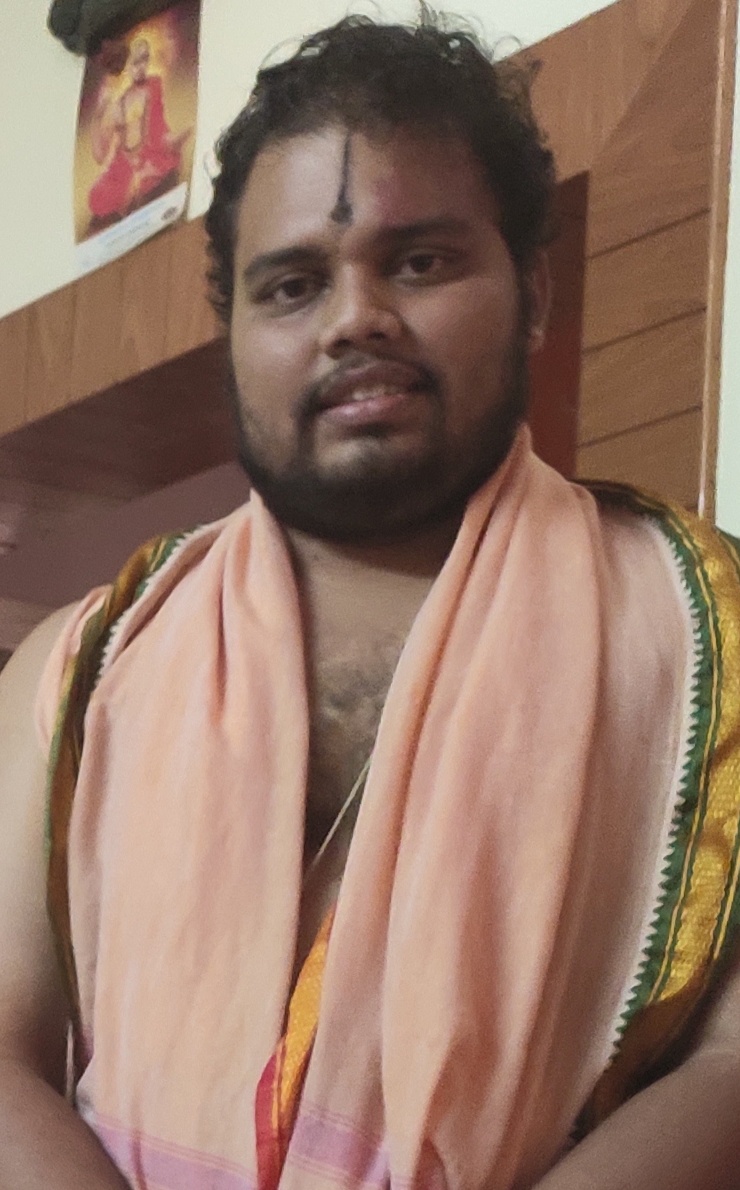The Upanishads are a storehouse of sublime wisdom. They breathe transcendence in every word. Eligible seekers who dive deep into the mystical waves of the Upanishads will certainly reach the other side of the shore – तद्विष्णोः परमं पदम्। i.e., moksha. However, these waves of the Upanishadic ocean are as dangerous as they are mesmerizing. Those who dive into it without appropriate measures viz., the tools of scriptural interpretation known as Tatparya lingas, are just washed away in the mighty waves. Thus, one has to be well prepared before venturing into the Upanishads.
We are extremely fortunate inasmuch as we have already been equipped by Shriman Madhwacharya to carry out this adventure. His Upanishad bhashyas and other works like the Sutra bhashya, unlock the treasure that lies in the sanctum sanctorum of the Upanishads. Unlike the advocates of Mayavada who unwarrantedly divide the contents of the Vedas as Tattvavedaka (conveying the absolute reality; eg- Aham Brahmasmi, Tattvamasi, etc) and Atattvavedaka (not conveying the absolute reality but only an empirical one; eg- Dvasuparna, Yaha sarvajnaha sa sarvavit, etc). Shri Madhwacharya considers the entire body of Upanishads and the Vedas as conveying the Supreme Brahman in various ways. Thus, Shri Madhwa does actual justice to the celebrated status of the Vedas by his holistic approach of interpretation.
Shri Jaya Tirtha, Madhwa’s commentator par excellence, brings out the spirit of the Upanishads as per the teachings of Shri Madhwa, in his own inimitable style. In his magnum opus, Shriman Nyaya Sudha, Shri Jaya Tirtha (Teekacharya) captures the summum bonum of the Vedas and the Upanishads in a way that only a personality of his stature can. One can’t feel anything but sheer astonishment looking at the heights of mysticism to which a mighty dialectician and controversialist like Shri Jaya Tirtha takes us in these breathtaking lines of his-
“सर्वाण्यपि हि वेदवाक्यानि असङ्ख्येयकल्याणगुणाकरं सकलदोषगन्धविधुरमेकरूपमेव परं ब्रह्म नारायणाख्यं प्रतिपादयन्ति। किन्तु कानिचित् सर्वज्ञत्वसर्वेश्वरत्वसर्वान्तर्यामित्वसौन्दर्यौदार्यवीर्यादि गुणविशिष्टतया कानिचित् अपहतपाप्मत्वनिर्दुःखत्वप्राकृतभौतिकविग्रहरहितत्वादिदोषाभावविशिष्टतया कानिचित् अतिगहनताज्ञापनाय वाङ्मनसागोचरत्वाकारेण कानिचित् सर्वपरित्यागेन तस्यैवोपादानाय अद्वितीयत्वेन कानिचित् सर्वसत्ताप्रतीतिप्रवृत्तिनिमित्तताप्रतिपत्यर्थं सर्वात्मकत्वेन इत्येवमाद्यनेकप्रकारैः परमपुरुषं बोधयन्ति। ततो व्याकुलबुद्धयो गुरुसम्प्रदायविकला अश्रुतवेदव्याख्यातारः सर्वत्राप्येकरूपतामननुसन्दधाना वेदं छिन्दन्ति।।” (1-1-6)
“All the texts of the Vedas proclaim the Supreme Brahman called Narayana who is a storehouse of innumerable virtues, is devoid of all traces of flaws and has an undifferentiated form. However, He is described by some
i) as possessing various virtues like omniscience, sovereignty, all-pervasive inherence, beauty, generosity, strength, etc ii) by some others as possessing the absence of various flaws such as being free from sins and miseries, not having a physical, mundane form, etc iii) by some others, in order to indicate His immense profundity, as being unfathomable through words and thoughts iv) by yet others as being the One without a second, to preach abandonment of everything else and seeking refuge in Him alone v) and by others as being the self of all so as to bring out His causativeness in the existence, sentience and activity of everything. The Supreme Being is thus conveyed in various ways by these texts. Due to this, uninformed commentators on the Vedas, with their wavering intellects and lack of knowledge about the authentic traditional teachings of Gurus, fail to envision the unanimity of thought and hence divide the Vedas.” (Shriman Nyaya Sudha- 1-1-6).
This stupendous description captures the spirit of the Upanishads in an impeccable manner and paves way for a clear understanding of the lofty texts. The Vedas and Upanishads thus set out with the purpose of introducing the majesty of Brahman to the seekers. While some are positive in their praise of the Lord (यः सर्वज्ञः सः सर्ववित्, आनन्दं ब्रह्म विजानीयात्…), other texts convey His majesty by negating imperfections in Him (केवलो निर्गुणश्च, आत्मा अपहतपाप्मा, नेति नेति…). When they say that Brahman is nirguna, they are only denying the existence of sattva, rajas and tamo gunas in Him. It would be too serious a misadventure to take such negative statements for granted and rule out all attributes in Brahman for it would not only contradict hundreds of texts which proclaim His innumerable virtues but would also go against all reasoning because an entity with absolutely no attributes simply cannot exist! Similarly, when the Upanishads say that words can’t describe Him (यतो वाचो निवर्तन्ते…), they are only showing the limitations of all verbal endeavors in conveying Him and highlighting the fact that His excellence surpasses all descriptions. He is always more than what the words can say and the mind can conceive. Also, it is obvious for anyone to become speechless when experiencing a wonder! What to speak of the great seers who experienced the wonder of all wonders – Brahman Himself! In case of statements which declare that Brahman is the only one that exists (एकमेवाद्वितीयम्…), it is not to be misinterpreted that everything else doesn’t have real existence. The emphasis is on the fact that He is the only one that has independent existence and every other entity depends on Him for its very being and becoming. Thus, the point being driven home is that the existence of everything else is insignificant and it is the Supreme, self-dependent existence of Brahman alone that really counts. A wise one who knows this, would have God as the pivot of his life and would give up material pleasures in His pursuit.
Apart from these, we have such expressions where the Lord is identified with the individual selves and the universe (तत्वमसि, सर्वं खल्विदं ब्रह्म). However, taking these statements at face value without introspecting on their context and intent would lead to disastrous conclusions, those which go against all valid experience, inference and verbal testimony. Such statements are made with an intention of highlighting the absolute sovereignty of Brahman over every entity. Nothing can know, move or even exist without the benevolence of the Lord. Thus, the scriptures say that He is everything.
Vedanta shows things which can never be seen with mortal eyes. The majesty and supremacy of Narayana who is the Supreme Brahman is the central theme of the Upanishads. However, to see what they show requires the right vision. As Shri Jaya Tirtha poignantly remarks in the Vishnu-tattva-vinirnaya teeka, “योहि यत्र आदरवान् तस्मै तद्वस्तु विद्यमानमपि स्फुरति, नत्वनादरवतो अन्यत्रादरवतश्च इत्यनुभवसिद्धम्”- “Only he who is attentive would notice a particular thing that exists, not someone who is inattentive or has his attention elsewhere; this is a matter of experience”; it is imperative to be determined to know the right things if the sacred literature has to open up.
If we aren’t interested in knowing the Supreme Brahman through the scriptures, we would end up in misinterpreting them. Let us develop the right vision through the grace of Gurus and the Lord to decipher the treasure of wisdom and experience the magnificence of the Upanishads.

